What is a Wheeled Tractor?
A wheeled tractor is an agricultural vehicle equipped with wheels instead of tracks. It is primarily used for tasks like plowing, tilling, and hauling. Its versatility and mobility make it essential for modern farming operations.
Key Components of a Wheeled Tractor
- Engine: Provides the power for various agricultural tasks.
- Wheels: Ensure mobility over different terrains.
- Transmission: Allows control over speed and torque.
- Hydraulics: Operate attachments like plows and loaders.
Advantages of Wheeled Tractors
- Versatility: Suitable for a wide range of tasks.
- Mobility: Easier to maneuver on roads and fields.
- Efficiency: Quicker movement between locations compared to tracked vehicles.
Applications
Wheeled tractors are used in:
- Plowing and Tilling: Preparing soil for planting.
- Hauling: Transporting materials like crops and equipment.
- Attachments Operation: Using implements such as mowers and sprayers.
Understanding these key aspects highlights the importance and functionality of wheeled tractors in agriculture.
What is a Wheeled Tractor Used for in Agriculture?
A wheeled tractor is primarily used in agriculture for tasks such as plowing, tilling, planting, and transporting materials. These versatile machines are essential for efficient farm operations.
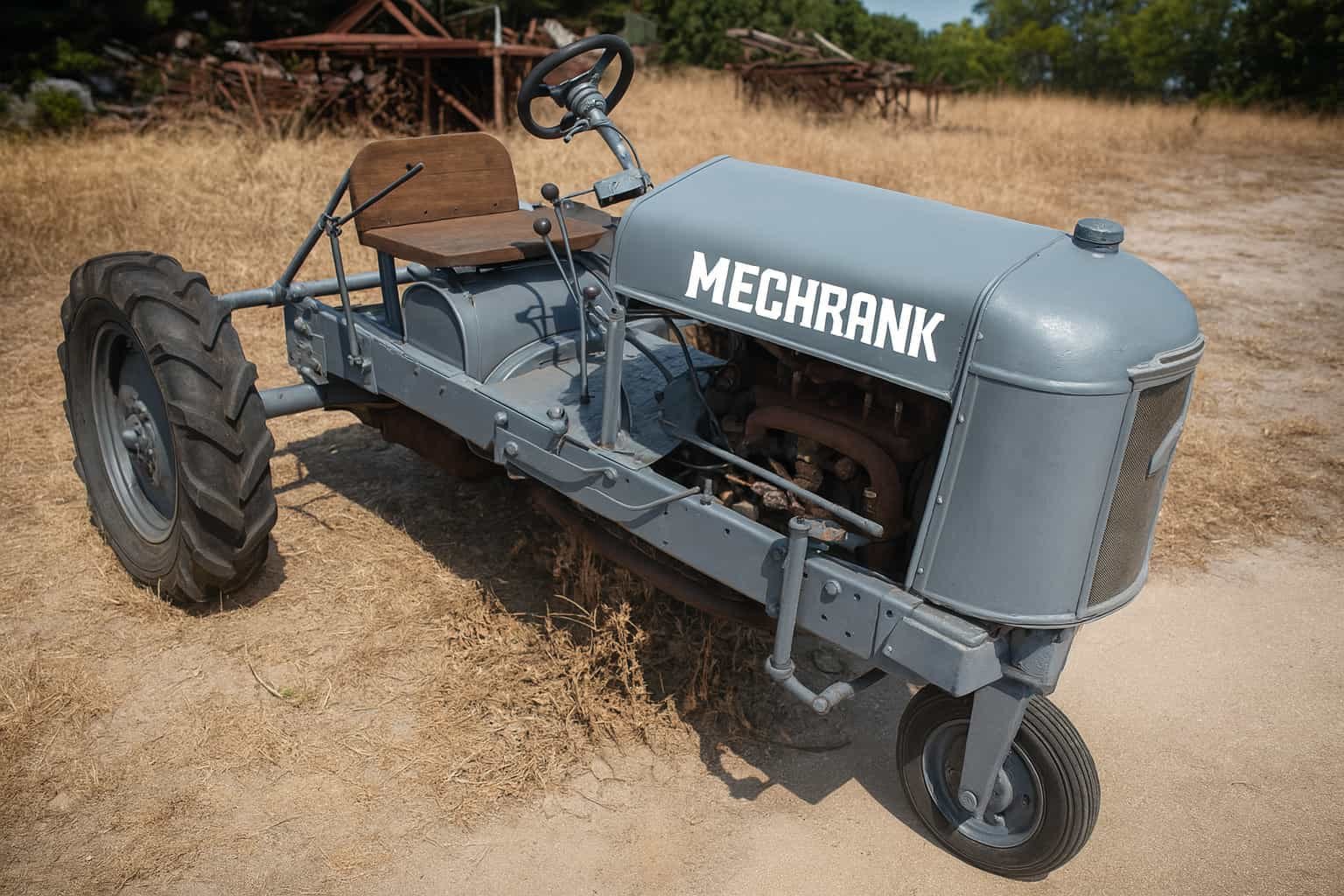
Key Uses of a Wheeled Tractor
- Plowing and Tilling: Preparing the soil for planting by breaking up and turning over the soil.
- Planting: Assisting in the precise placement of seeds into the soil.
- Material Transport: Moving harvested crops, fertilizers, and other materials around the farm.
- Harvesting: Supporting harvesting equipment to gather crops efficiently.
- Maintenance: Managing farm infrastructure, such as fencing and irrigation systems.
Benefits
- Efficiency: Increases productivity by automating heavy and repetitive tasks.
- Versatility: Can be equipped with various attachments for different farming activities.
- Time-Saving: Reduces the time required for manual labor, allowing farmers to cover more ground quickly.
In summary, wheeled tractors are indispensable in modern agriculture for their functionality and ability to enhance productivity.
What is the difference between a wheeled tractor and a crawler tractor?
Wheeled tractors have rubber tires and are suited for hard, dry surfaces, offering higher speed and versatility. Crawler tractors, equipped with tracks, provide superior traction on soft, uneven, or muddy terrain but move slower.
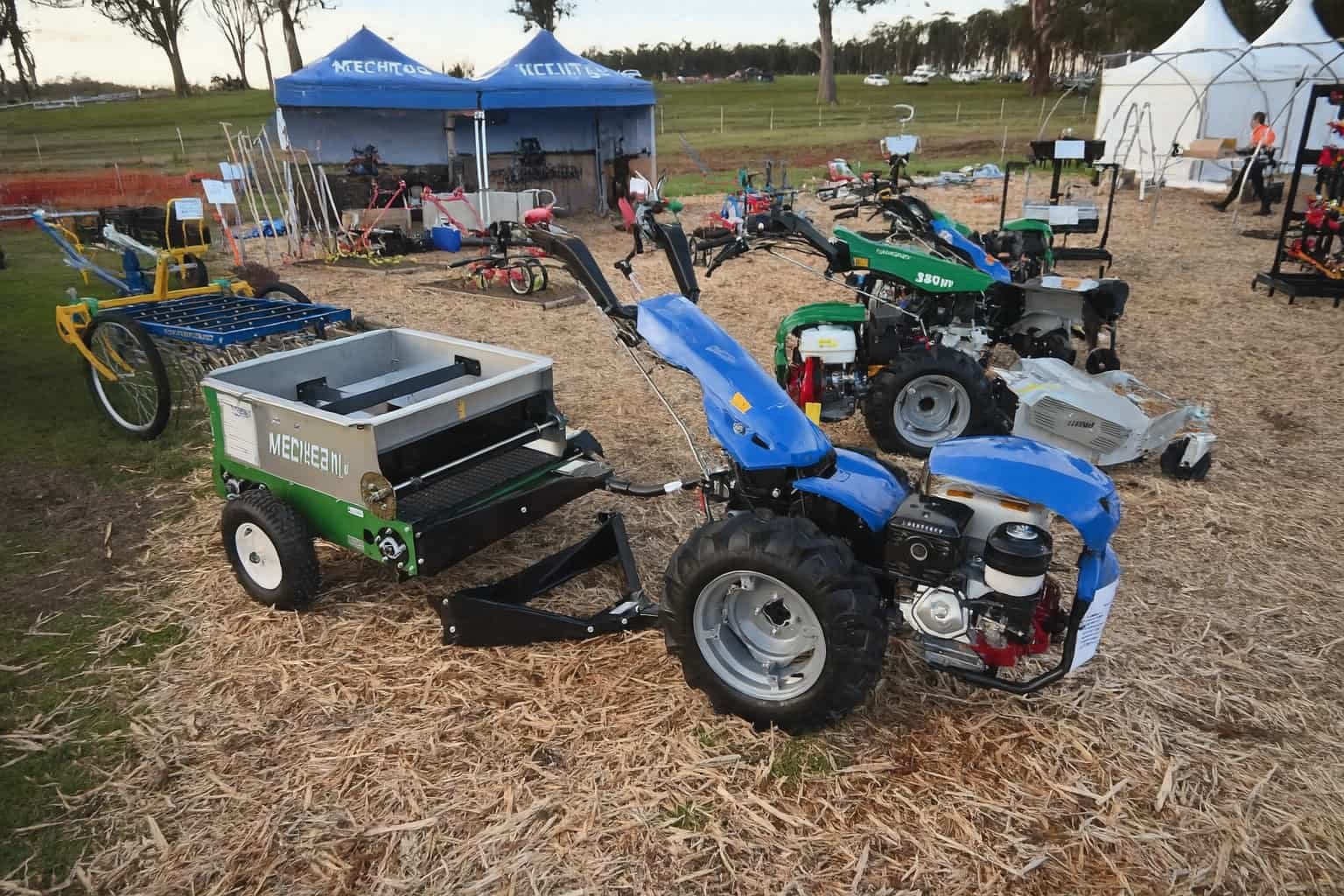
Wheeled Tractors:
- Mobility: Faster on roads.
- Terrain: Best for flat, firm surfaces.
- Versatility: Suitable for various attachments and uses.
- Maintenance: Easier and often cheaper to maintain.
Crawler Tractors:
- Traction: Excellent grip on soft or uneven ground.
- Stability: Better weight distribution, reducing soil compaction.
- Speed: Slower movement compared to wheeled tractors.
- Usage: Ideal for construction, forestry, and challenging agricultural tasks.
Understanding these differences helps in choosing the right tractor based on specific operational needs and terrain conditions.
Are Wheeled Tractors Suitable for Hilly Terrain Compared to Track Tractors?
Wheeled tractors are generally less suitable for hilly terrain compared to track tractors. Track tractors offer better stability, traction, and reduced soil compaction on slopes.
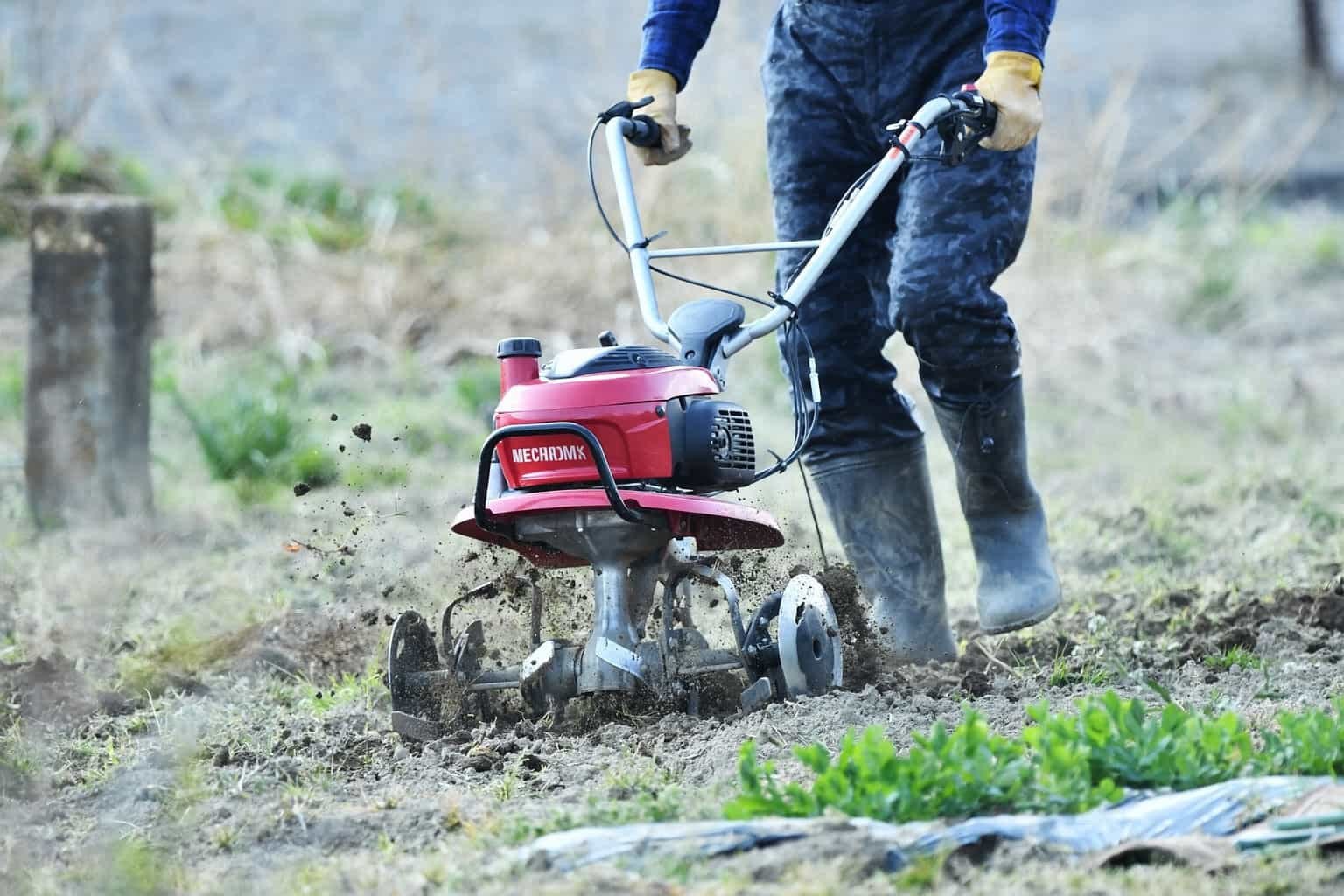
Key Differences:
- Stability: Track tractors distribute weight more evenly, minimizing the risk of tipping over on slopes.
- Traction: Tracks provide greater surface contact, enhancing grip and preventing slippage.
- Soil Compaction: Tracks exert lower ground pressure, preserving soil structure and preventing erosion.
Conclusion:
While wheeled tractors can operate on hilly terrain, track tractors are more effective and safer due to their superior stability and traction. For hilly or uneven surfaces, track tractors are the preferred choice.
Are Wheeled Tractors Better for Soft or Wet Soil?
Wheeled tractors are generally not ideal for soft or wet soil. Their tires can sink into the ground, causing soil compaction and reducing traction, which makes them less effective under these conditions.

Key Considerations:
- Soil Compaction: Wheeled tractors exert higher ground pressure, leading to soil compaction that can damage soil structure.
- Traction Issues: In soft or wet conditions, wheels may lose traction, making it difficult to maneuver and perform tasks efficiently.
- Alternatives: Tracked tractors are usually better suited for these conditions as they distribute weight more evenly and provide better traction.
Conclusion:
Wheeled tractors are less efficient in soft or wet soil due to increased soil compaction and traction challenges. Tracked tractors offer a more suitable alternative under such conditions.
Can Wheeled Tractors Be Used for Construction Tasks?
Yes, wheeled tractors can be used for certain construction tasks. They are versatile machines that can handle jobs like grading, moving materials, and light excavation when equipped with the right attachments.

Key Uses in Construction:
- Grading and Leveling: With a grader attachment, wheeled tractors can create a smooth, level base for roads and foundations.
- Material Handling: Equipped with loaders or forklifts, they can transport materials around a construction site efficiently.
- Light Excavation: With backhoe attachments, they can perform tasks such as digging trenches and small-scale earthmoving.
Benefits:
- Versatility: Easily switch between different attachments to perform various tasks.
- Mobility: Wheeled tractors are faster and more maneuverable on firm, flat surfaces compared to tracked vehicles.
- Cost-Effective: Generally less expensive to maintain and operate than specialized construction machinery.
In summary, while wheeled tractors are not suited for all heavy-duty construction tasks, they offer significant utility for a range of light to medium-duty applications when paired with appropriate attachments.
What Attachments Can Be Used with Wheeled Tractors?
Wheeled tractors can be equipped with a variety of attachments to enhance their functionality in agriculture, construction, and landscaping. Common attachments include plows, mowers, loaders, sprayers, and seeders.
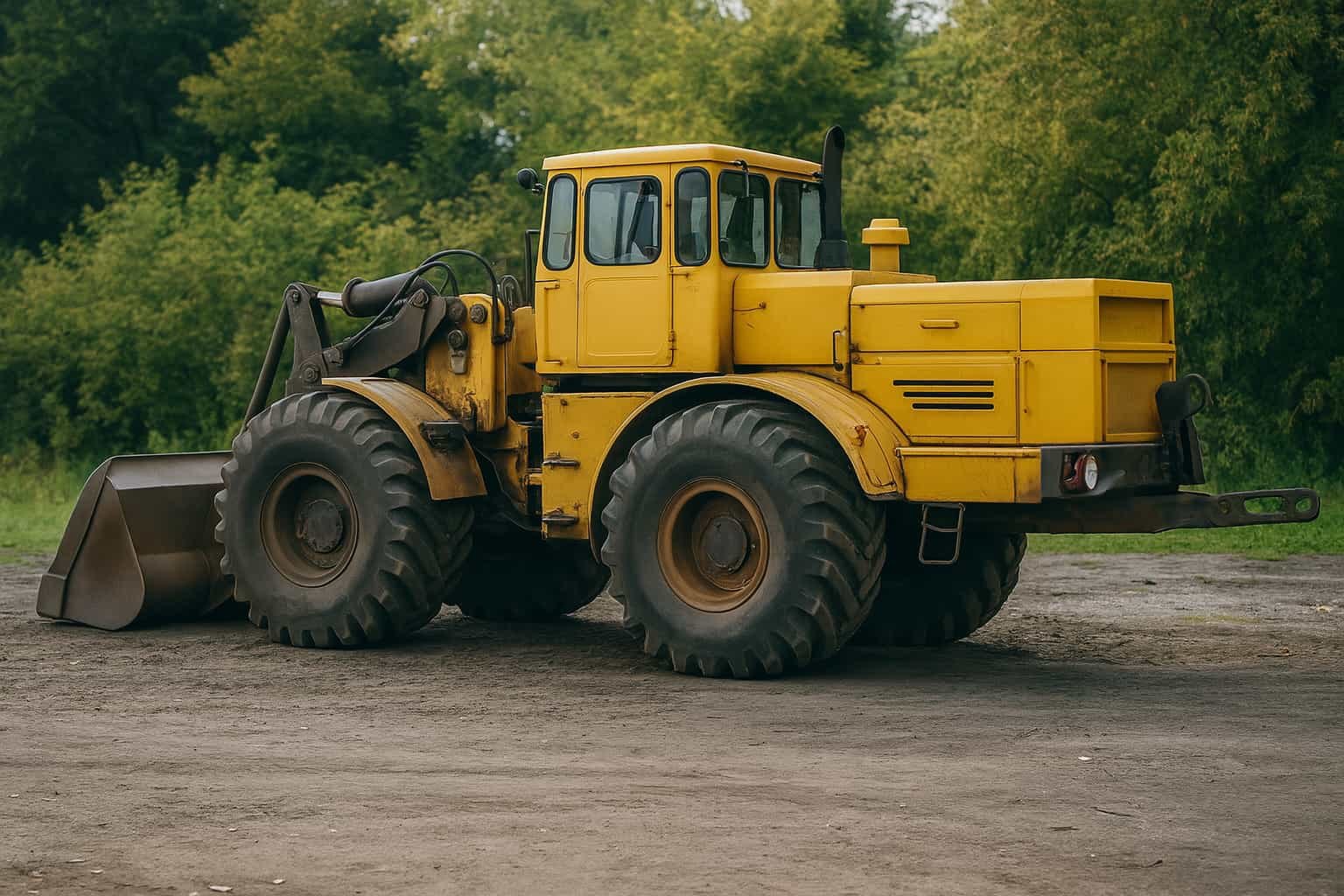
Common Attachments for Wheeled Tractors:
- Plows: Used for tilling soil and preparing fields for planting.
- Mowers: Ideal for cutting grass, maintaining lawns, and clearing fields.
- Loaders: Useful for moving soil, gravel, and other materials.
- Sprayers: Employed for applying pesticides, herbicides, and fertilizers.
- Seeders: Facilitate the planting of seeds in precise rows.
Specialized Attachments:
- Harrows: For breaking up and smoothing out soil.
- Backhoes: Integral for digging trenches and excavating.
- Grain Carts: Assist in transporting harvested crops.
- Bale Wrappers: Used for wrapping bales of hay for storage.
Benefits:
- Versatility: Enhances the range of tasks a tractor can perform.
- Efficiency: Saves time and labor by mechanizing tasks.
- Productivity: Increases the output and effectiveness of farming operations.
This variety of attachments makes wheeled tractors indispensable for diverse agricultural and construction activities.
What types of wheels are used on wheeled tractors?
Wheeled tractors primarily use two types of wheels: agricultural (or lug) tires and industrial (or R4) tires. Each type is designed to optimize performance for specific tasks and terrains.
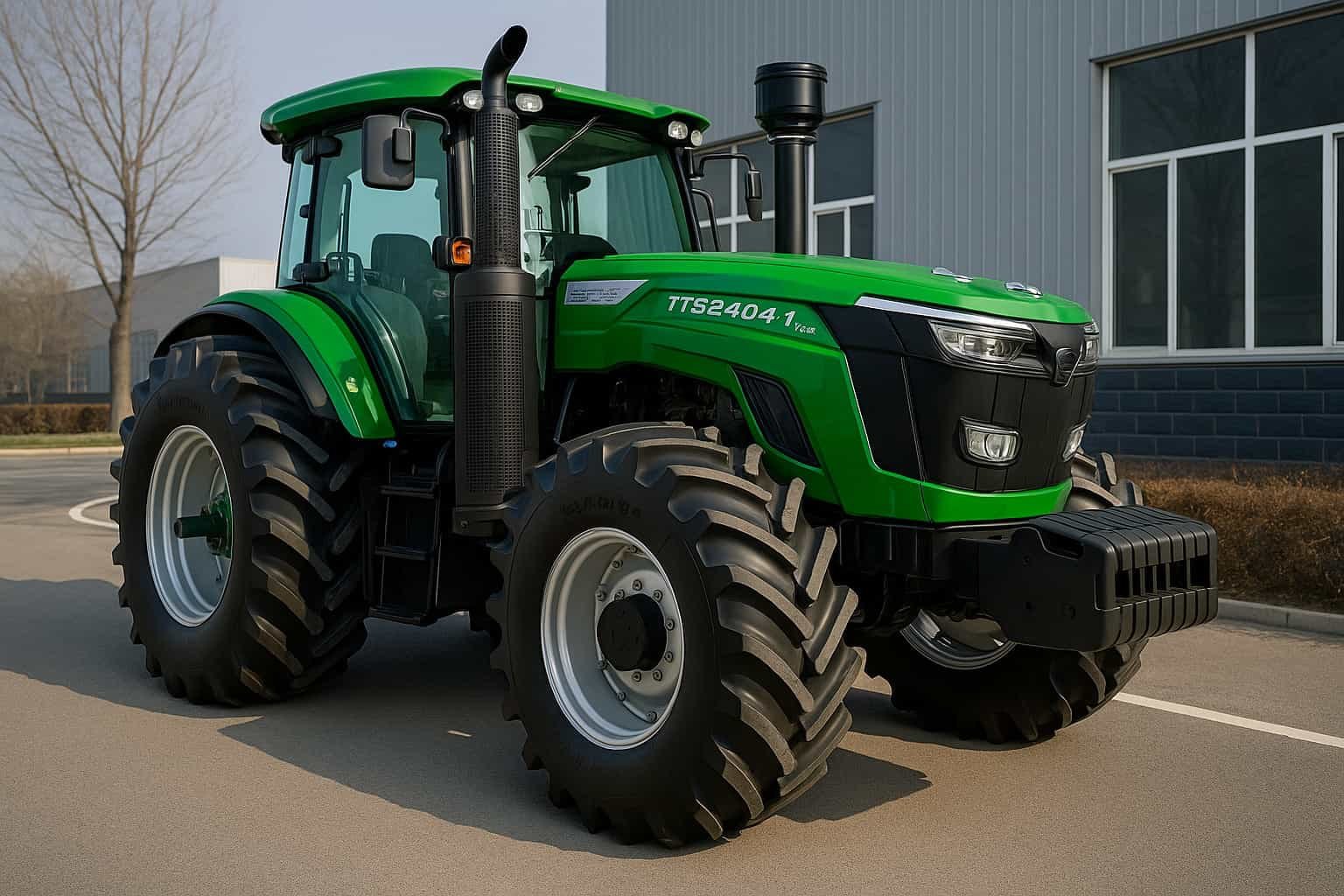
Agricultural (Lug) Tires
- Purpose: Ideal for farming and soft soil.
- Design: Deep, aggressive treads for maximum traction.
- Advantages: Excellent grip in muddy or loose soil conditions.
Industrial (R4) Tires
- Purpose: Suitable for mixed-use environments, including pavement and gravel.
- Design: Shallower treads compared to lug tires, providing a balance between grip and durability.
- Advantages: Versatile for both agricultural and construction tasks.
Key Considerations
- Terrain: Choose based on the primary working environment.
- Task Specificity: Match tire type to specific job requirements for optimal performance.
- Durability: Consider wear and tear based on usage frequency and surface type.
Selecting the right wheels for a wheeled tractor is crucial for efficiency and effectiveness in various agricultural and industrial tasks.
What type of tires are best for wheeled tractors in soft soil?
The best tires for wheeled tractors in soft soil are flotation tires. These tires distribute the tractor’s weight more evenly, reducing soil compaction and improving traction.

Key Features of Flotation Tires:
- Wide Tread: Wider surface area to spread weight.
- Low Pressure: Lower air pressure for better ground contact.
- Deep Tread Pattern: Enhanced grip and stability in loose soil.
- Flexible Sidewalls: Improved shock absorption and ride comfort.
By using flotation tires, tractors can operate more efficiently in soft soil conditions without damaging the terrain, ensuring both productivity and soil health.
How to Choose the Right Wheeled Tractor for Your Farm?
Selecting the right wheeled tractor for your farm involves evaluating your farm’s size, terrain, and specific agricultural needs. Key factors to consider include horsepower, attachments, and fuel efficiency.
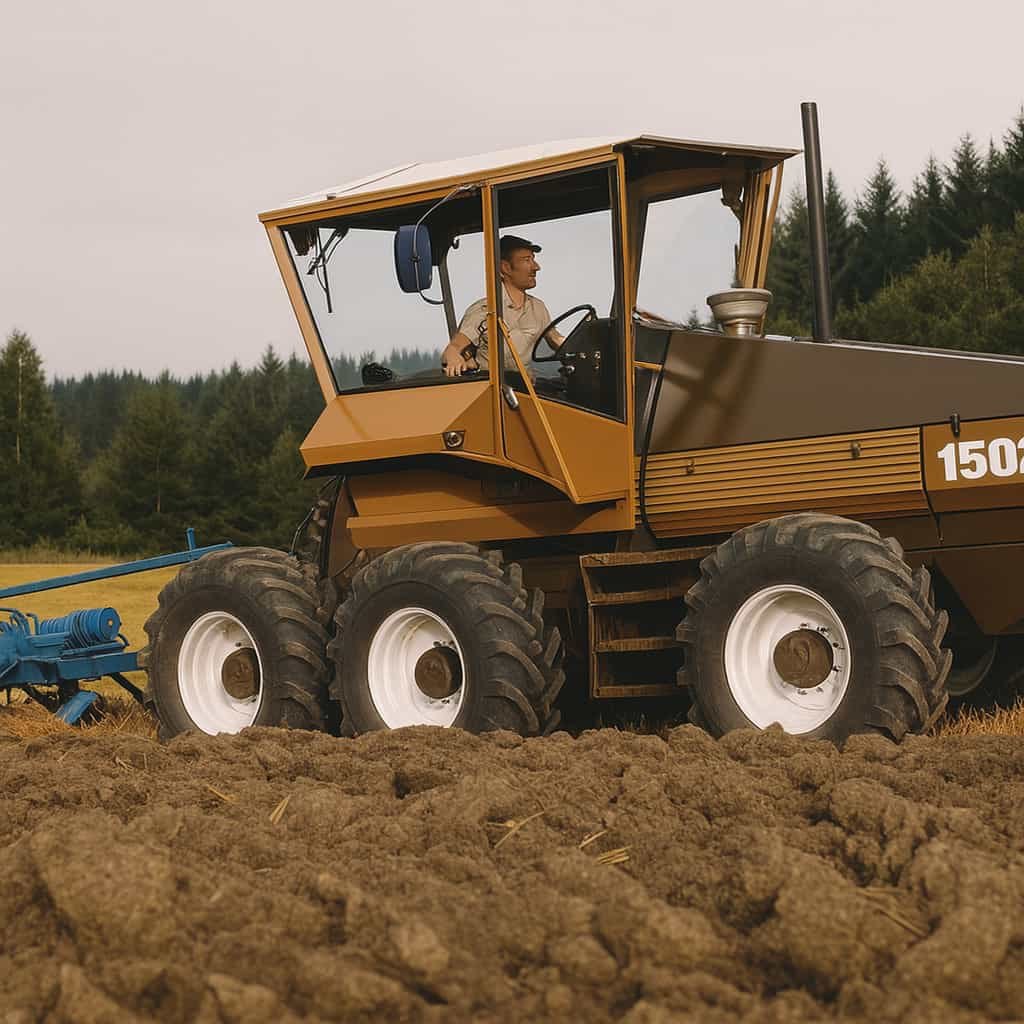
- Assess Farm Size and Terrain:
- Small farms: 20-50 HP tractors.
- Medium farms: 50-100 HP tractors.
- Large farms: 100+ HP tractors.
- Consider terrain type: flat vs. hilly.
- Determine Required Attachments:
- Identify essential implements: plows, harrows, loaders.
- Compatibility with tractor models.
- Evaluate Fuel Efficiency:
- Diesel vs. gasoline: diesel is more fuel-efficient for larger farms.
- Look for tractors with modern fuel-saving technologies.
- Consider Maintenance and Durability:
- Availability of spare parts.
- Brand reliability and service network.
- Test Drive and Reviews:
- Test drive several models.
- Read reviews from other farmers.
By following these steps, you can ensure the tractor you choose meets your farm’s operational needs and long-term goals.
What is the standard turning radius of a wheeled tractor?
The standard turning radius of a wheeled tractor typically ranges between 12 to 18 feet (3.7 to 5.5 meters). This measurement varies based on the tractor model and manufacturer specifications.
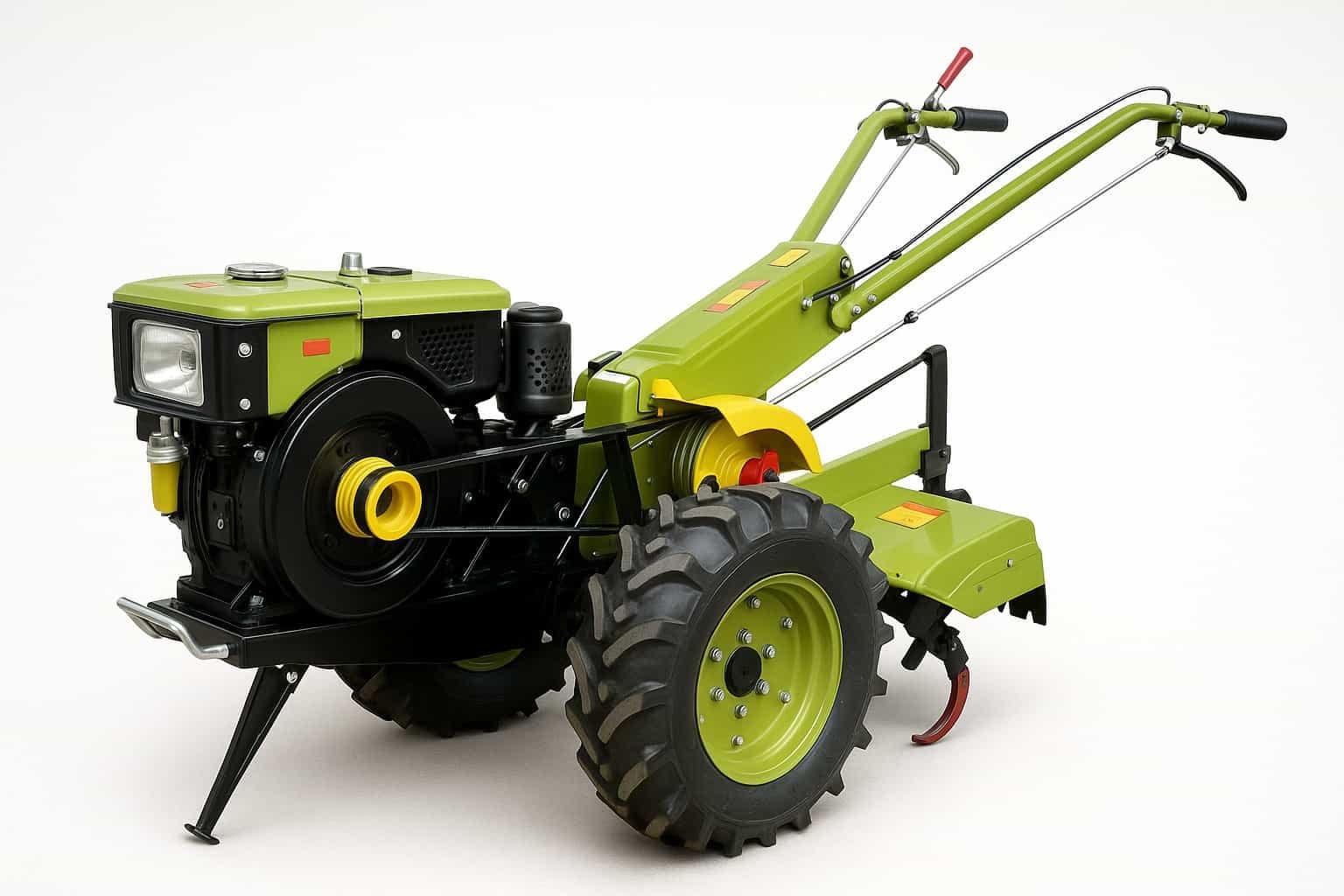
Factors Influencing Turning Radius
- Tractor Size: Larger tractors generally have a larger turning radius.
- Wheel Configuration: The type and arrangement of wheels can impact maneuverability.
- Steering Mechanism: Advanced steering mechanisms, like articulated steering, can reduce the turning radius.
- Usage: Tractors designed for specific tasks, such as fieldwork or navigation in tight spaces, may have optimized turning capabilities.
Measuring Turning Radius
- Mark a Starting Point: Place a marker at the outer edge of the tractor’s front wheel.
- Complete a Full Turn: Drive the tractor in a circle until the front wheel returns to the starting point.
- Measure the Diameter: Use a tape measure to determine the diameter of the circle.
- Calculate Radius: Divide the diameter by two to get the turning radius.
Understanding the turning radius is crucial for efficient field operation and ensuring that the tractor meets specific agricultural needs.
How to Prevent Soil Compaction When Using Wheeled Tractors?
To prevent soil compaction when using wheeled tractors, minimize the weight and pressure exerted on the soil. Implement practices like using wider tires, reducing tire pressure, and avoiding wet conditions.
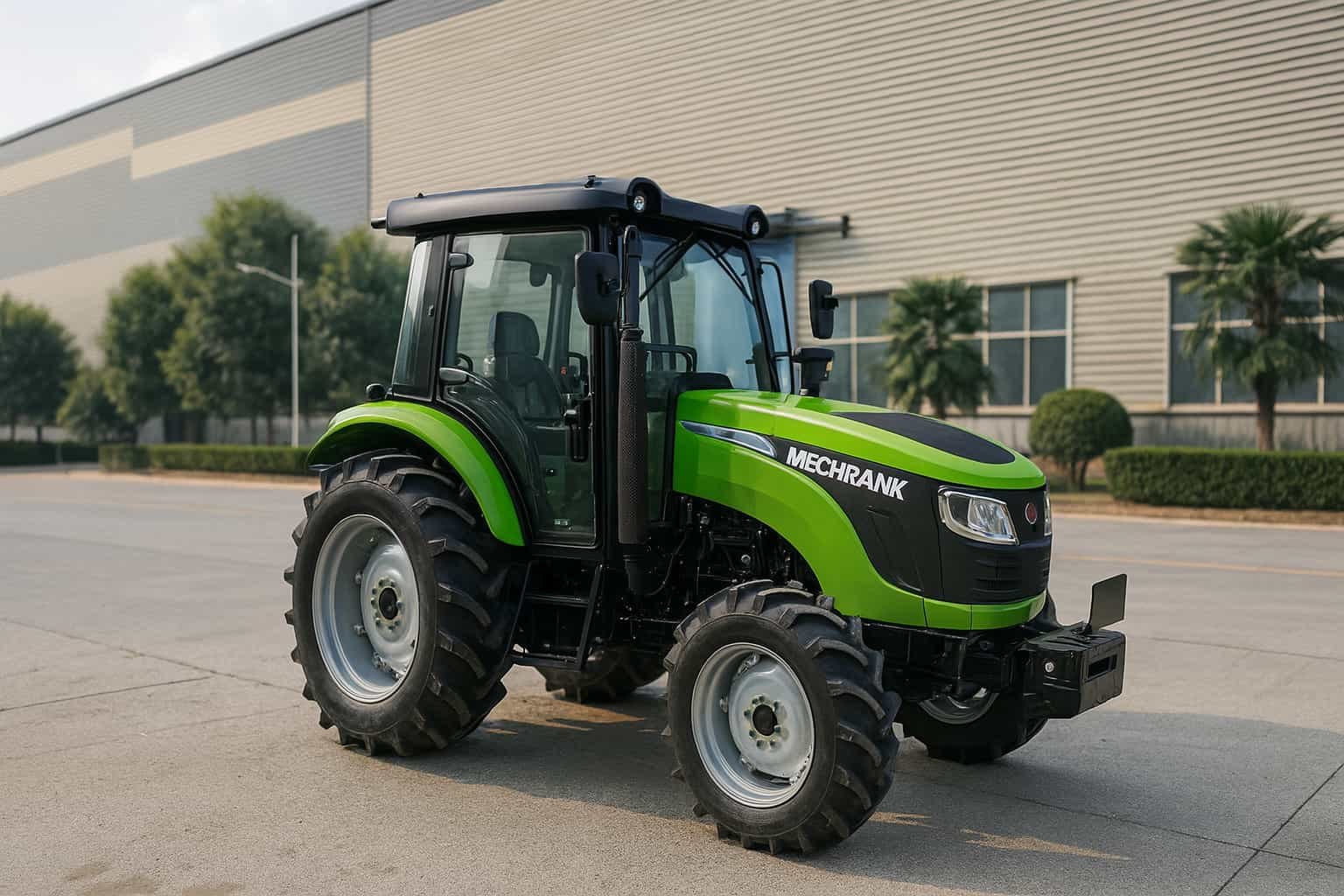
Key Practices to Prevent Soil Compaction:
- Use Wider Tires: Distribute weight more evenly across a larger surface area.
- Lower Tire Pressure: Reduce ground pressure for less soil impact.
- Avoid Wet Conditions: Wet soil compacts more easily, so operate during drier periods.
- Controlled Traffic Farming: Restrict tractor movement to specific paths to limit soil disturbance.
- Use Dual Tires or Tracks: Further distribute weight and reduce soil pressure.
By following these methods, you can significantly reduce the risk of soil compaction, maintaining soil health and productivity.
How to Operate a Wheeled Tractor Safely on Uneven Ground?
To operate a wheeled tractor safely on uneven ground, maintain a low speed, use a low gear, and keep the tractor’s center of gravity low. Always ensure proper tire inflation and avoid sudden turns.
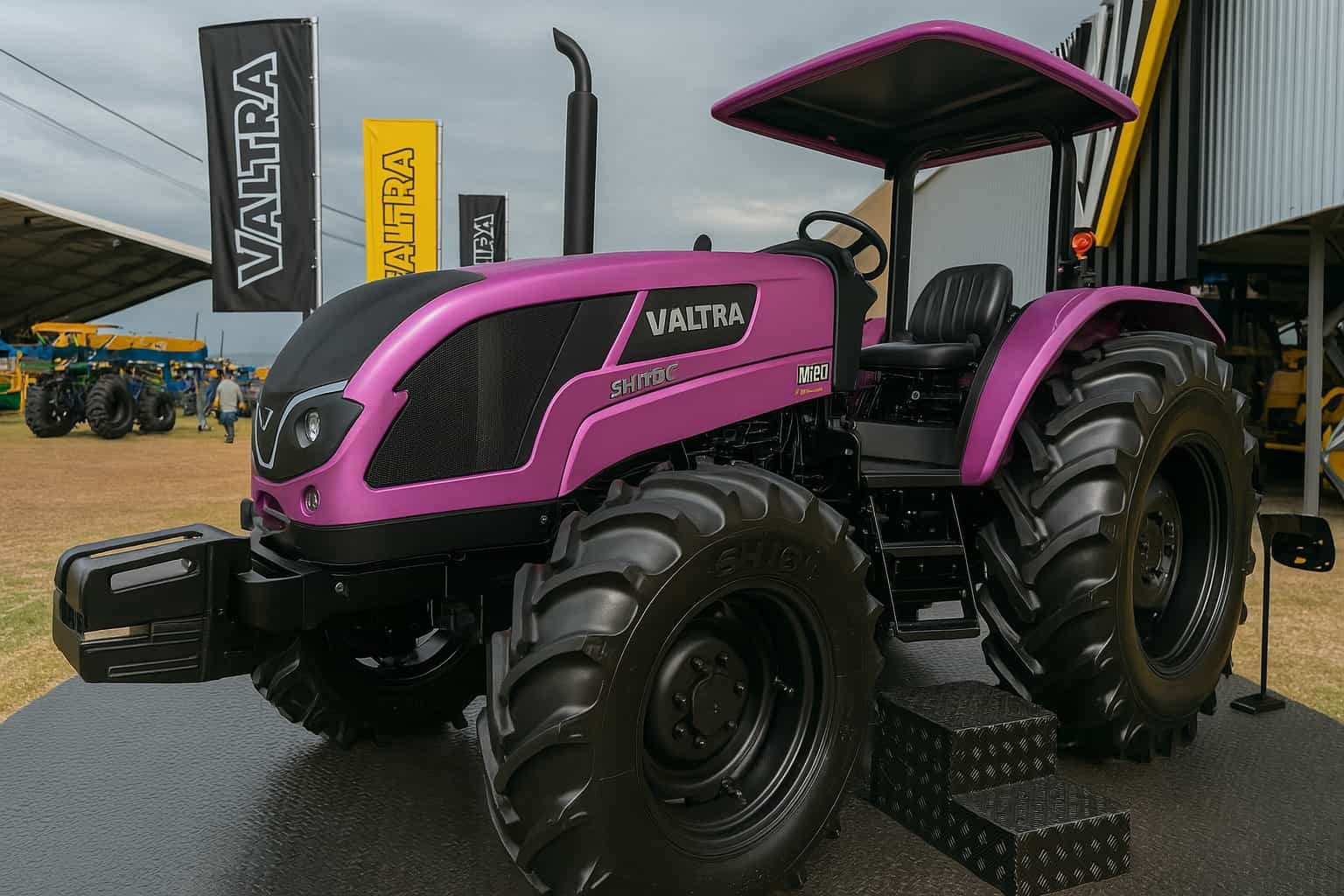
Key Safety Steps:
- Inspect the Terrain: Identify slopes, ditches, and obstacles before operating.
- Adjust Tire Pressure: Ensure tires are evenly inflated for better stability.
- Use Low Gear: Engage low gear to maintain control and reduce speed.
- Maintain Low Speed: Drive slowly to react to sudden changes in terrain.
- Avoid Sharp Turns: Make gradual turns to prevent tipping.
- Center of Gravity: Keep heavy loads low and close to the ground.
- Use Differential Lock: Engage differential lock for better traction on uneven surfaces.
- Stay Alert: Be aware of surroundings and potential hazards at all times.
By following these steps, you can enhance safety and control while operating a wheeled tractor on uneven ground.
What are safety considerations with wheeled tractors?
When operating wheeled tractors, key safety considerations include maintaining proper maintenance, using protective gear, and adhering to operational guidelines. Regular inspection, using seat belts, and being aware of surroundings are crucial for preventing accidents.
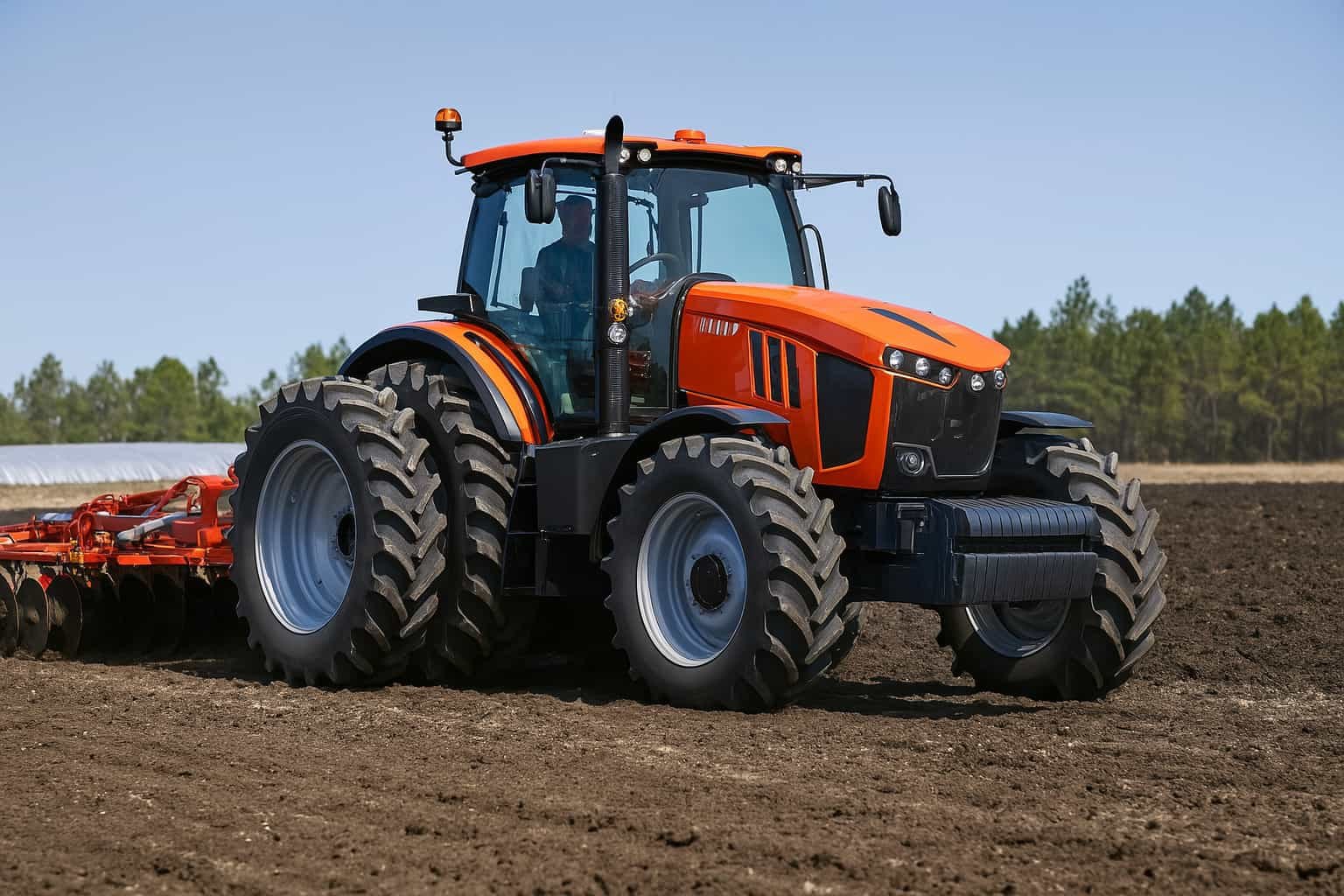
Key Safety Considerations:
- Proper Maintenance:
- Regularly check tires, brakes, and fluid levels.
- Ensure all lights and signals are functional.
- Protective Gear:
- Always wear a seatbelt.
- Use hearing protection if noise levels are high.
- Operational Guidelines:
- Familiarize with the operator’s manual.
- Never allow extra riders.
- Avoid sharp turns and steep slopes.
- Environmental Awareness:
- Be cautious on uneven terrain.
- Watch for obstacles and ensure clear pathways.
- Emergency Preparedness:
- Know emergency shutdown procedures.
- Keep a first-aid kit accessible.
Adhering to these considerations ensures safer tractor operations, reducing the risk of accidents and injuries.
How Often Should Wheeled Tractor Tires Be Replaced?
Wheeled tractor tires should typically be replaced every five to six years, depending on usage, terrain, and maintenance. Regular inspections can help identify early signs of wear or damage.
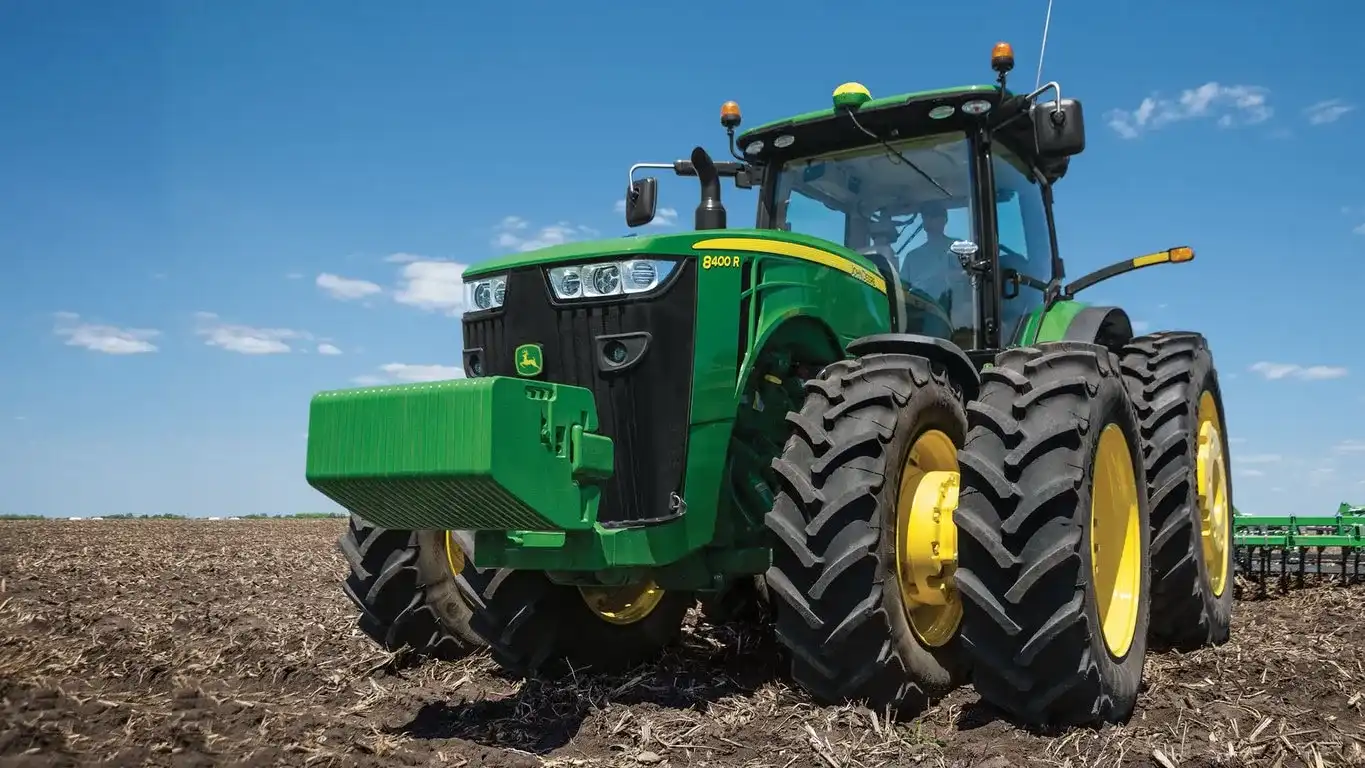
Factors Influencing Tire Replacement
- Usage Frequency: Frequent use accelerates wear.
- Terrain Type: Rough or uneven ground increases tire degradation.
- Maintenance Practices: Proper inflation and regular checks extend tire life.
- Storage Conditions: Exposure to extreme weather can deteriorate rubber.
Signs You Need New Tires
- Cracks and Cuts: Visible damage on the tire surface.
- Tread Wear: Reduced tread depth affects traction.
- Aging: Tires older than six years, regardless of wear, may be unsafe.
Maintenance Tips
- Regular Inspections: Monthly checks for wear and damage.
- Proper Inflation: Maintain recommended tire pressure.
- Clean Storage: Store tires in a cool, dry place away from sunlight.
By adhering to these guidelines, you can ensure the longevity and performance of your tractor tires.
How much does a wheeled tractor cost?
The cost of a wheeled tractor typically ranges from $15,000 to $150,000, depending on various factors such as brand, model, horsepower, and additional features.
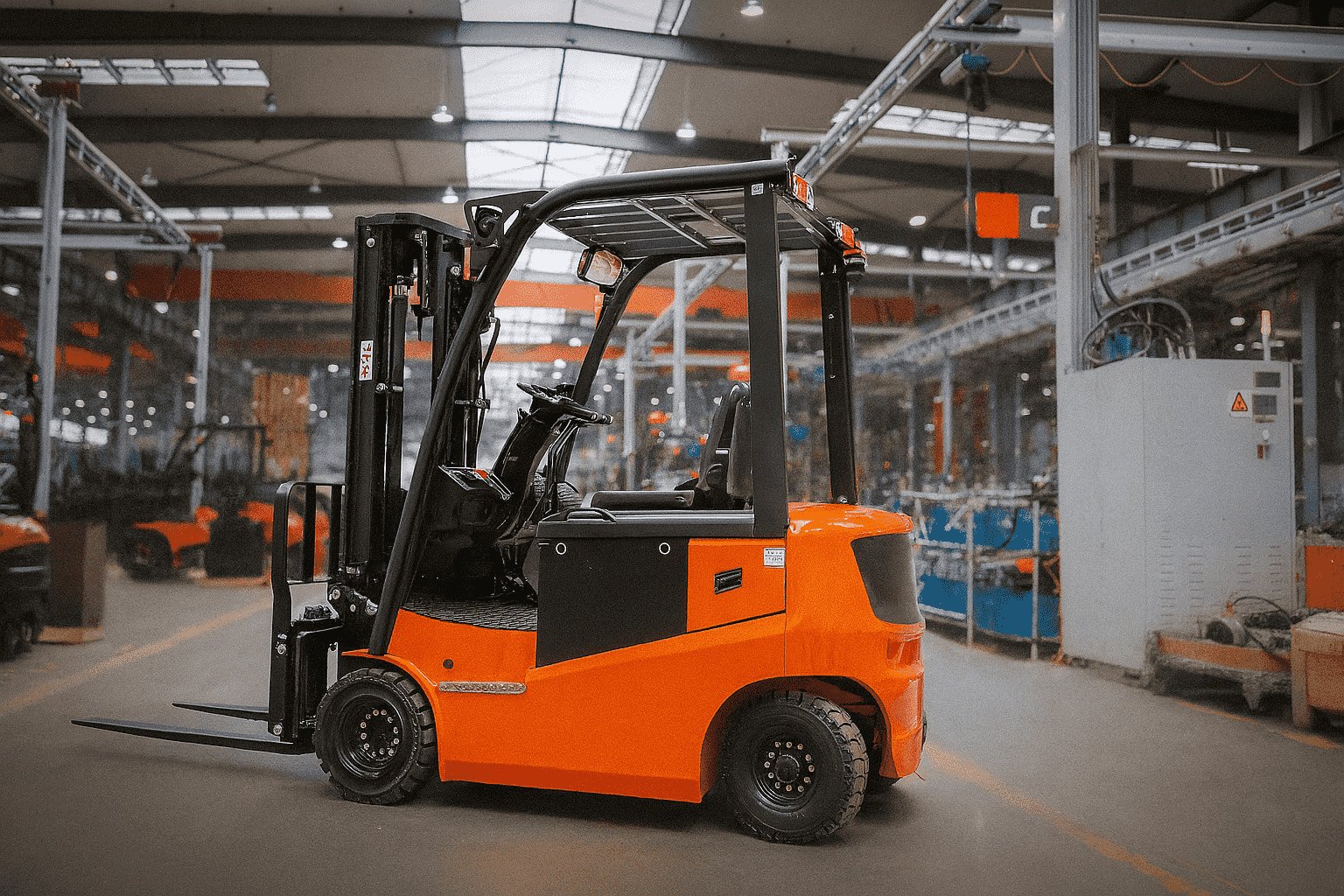
Factors Influencing Wheeled Tractor Cost
- Brand and Model: Premium brands and advanced models generally cost more.
- Horsepower: Tractors with higher horsepower are more expensive.
- Additional Features: GPS, advanced hydraulics, and comfort features can increase the price.
- Condition: New tractors cost more than used ones.
- Market Demand: Prices can fluctuate based on agricultural market conditions.
Price Breakdown
- Basic Models: $15,000 – $30,000
- Mid-range Models: $30,000 – $75,000
- High-end Models: $75,000 – $150,000
Conclusion
Understanding these factors can help you estimate the cost of a wheeled tractor suitable for your needs within the stated price ranges.
Are Wheeled Tractors Cheaper to Maintain Than Tracked Tractors?
Yes, wheeled tractors are generally cheaper to maintain than tracked tractors. This cost-efficiency stems from several key factors related to their design and operational requirements.
Maintenance Cost Factors
- Tire vs. Track Replacement:
- Wheeled Tractors: Replacing tires is usually less expensive and occurs less frequently.
- Tracked Tractors: Track systems are more complex and costly to replace.
- Mechanical Complexity:
- Wheeled Tractors: Simpler mechanical systems with fewer moving parts.
- Tracked Tractors: More intricate mechanisms requiring specialized maintenance.
- Fuel Efficiency:
- Wheeled Tractors: Tend to be more fuel-efficient, reducing operational costs.
- Tracked Tractors: Often consume more fuel due to increased friction and weight.
- Terrain Versatility:
- Wheeled Tractors: Better suited for diverse terrains, requiring less frequent repairs.
- Tracked Tractors: Designed for specific conditions, leading to higher wear in unsuitable environments.
In summary, the lower maintenance costs of wheeled tractors make them a more economical choice for many agricultural and industrial applications.
What are the long-term costs of owning a wheeled tractor?
The long-term costs of owning a wheeled tractor include regular maintenance, fuel, parts replacement, insurance, and potential financing costs. These expenses accumulate over time and impact the total cost of ownership.
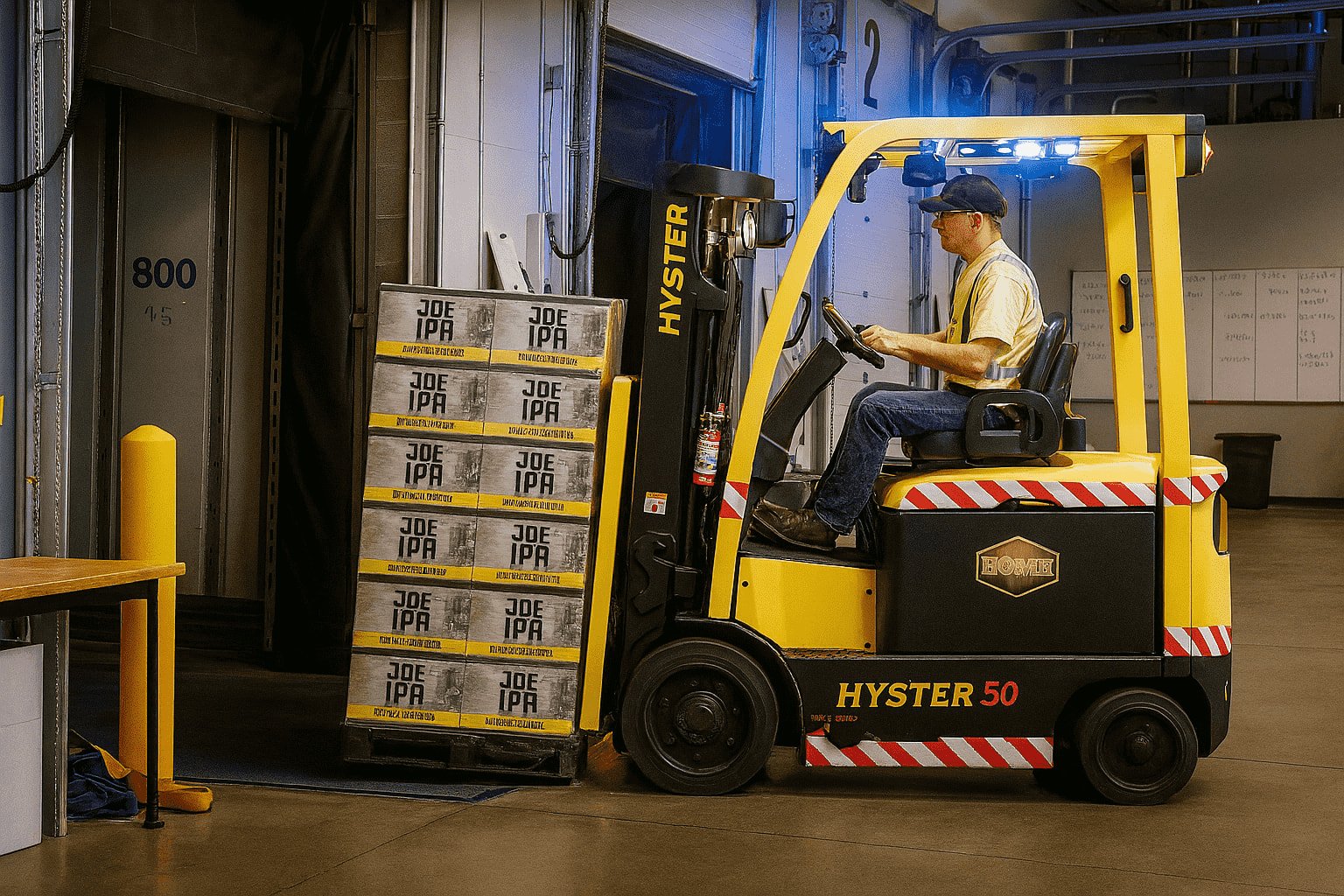
Breakdown of Long-term Costs:
- Maintenance: Routine servicing, such as oil changes, filter replacements, and tire care, are essential to keep the tractor in good working condition.
- Fuel: Fuel costs vary depending on the tractor’s engine efficiency and the hours of operation.
- Parts Replacement: Components like tires, belts, and hydraulic parts may need periodic replacement due to wear and tear.
- Insurance: Liability and theft insurance helps protect the investment but adds to the recurring costs.
- Financing: If the tractor is purchased through financing, interest payments contribute to long-term expenses.
Summary
Owning a wheeled tractor involves continuous costs beyond the initial purchase. Effective budgeting for maintenance, fuel, parts, insurance, and financing is crucial for long-term financial planning.
Where to Buy Wheeled Tractors for Farm Use?
You can buy wheeled tractors for farm use from specialized agricultural equipment dealers, online marketplaces, and directly from manufacturers.

Specialized Agricultural Equipment Dealers
- Local and regional dealerships often offer a wide range of wheeled tractors.
- They provide customer support and after-sales services.
Online Marketplaces
- Websites like TractorHouse, eBay, and Amazon list various models.
- You can compare different brands and prices conveniently online.
Direct from Manufacturers
- Companies like John Deere, Kubota, and New Holland sell directly through their websites.
- Often, they offer warranties and financing options.
Additional Tips
- Always check reviews and ratings of sellers.
- Consider visiting farm equipment expos for firsthand experience.
- Ensure you understand warranty terms and service availability.
By exploring these options, you can find the right wheeled tractor for your farming needs efficiently.
What should I look for when buying a second-hand wheeled tractor?
When buying a second-hand wheeled tractor, prioritize checking its overall condition, maintenance history, and operational hours. Ensure all parts are in good working order and verify the authenticity of the seller.
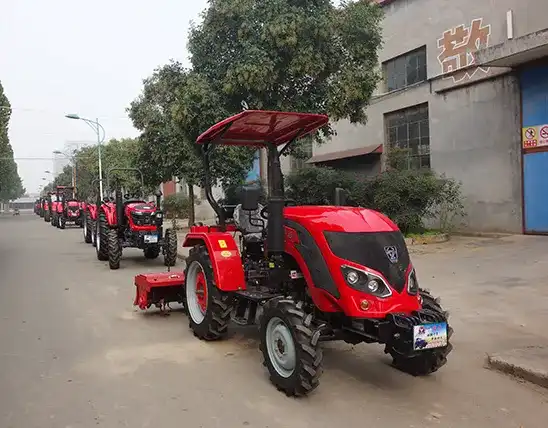
Key Considerations
- Condition and Wear:
- Inspect tires, engine, and hydraulics for wear and damage.
- Check for signs of rust or leaks, especially in the engine and transmission.
- Maintenance Records:
- Request service logs to understand past repairs and maintenance.
- Confirm that all scheduled maintenance was performed on time.
- Operational Hours:
- Evaluate the total hours the tractor has been used; lower hours generally indicate less wear.
- Compare operational hours to average lifespan expectations for the model.
- Functionality Tests:
- Test drive the tractor to assess performance.
- Ensure all controls and attachments function correctly.
Legal and Documentation
- Verify the tractor’s ownership and check for any outstanding liens.
- Ensure all documentation is accurate and up-to-date, including the bill of sale and registration papers.
By following these steps, you can make a more informed decision when purchasing a second-hand wheeled tractor.

